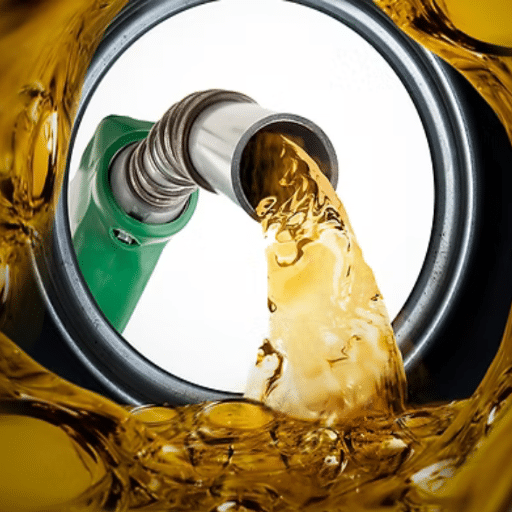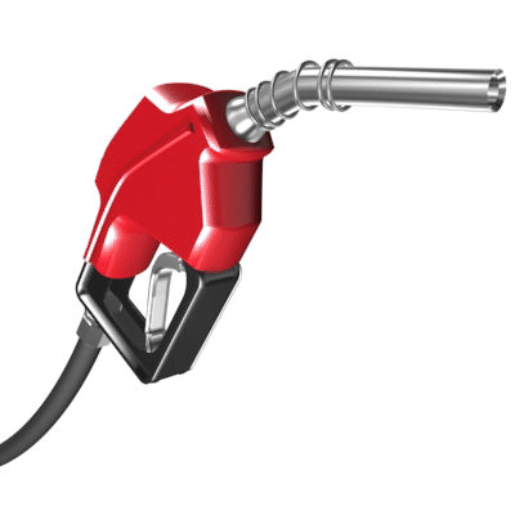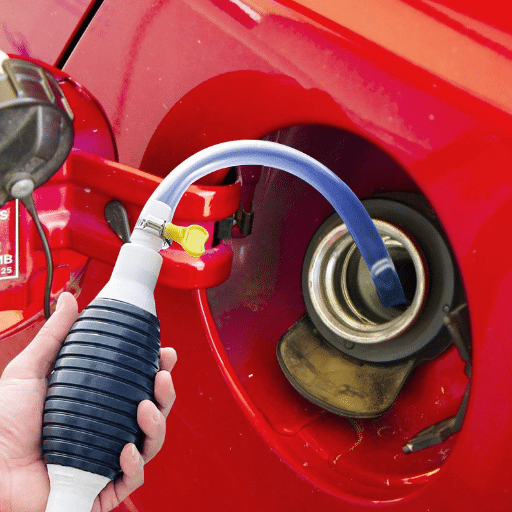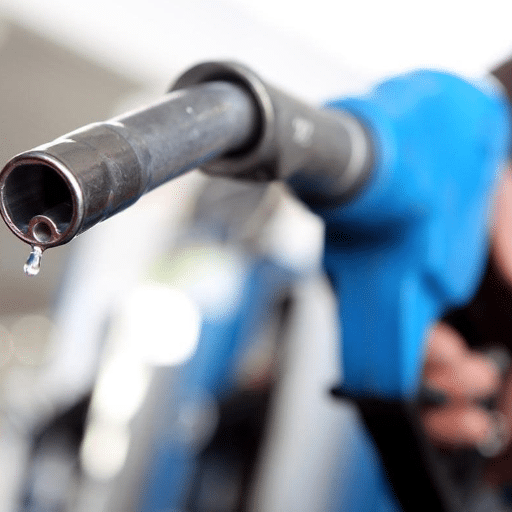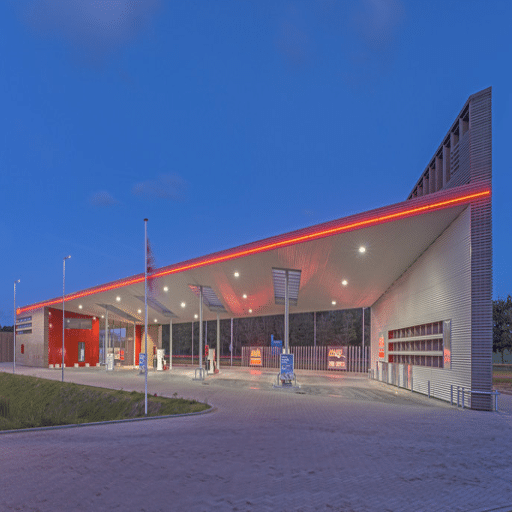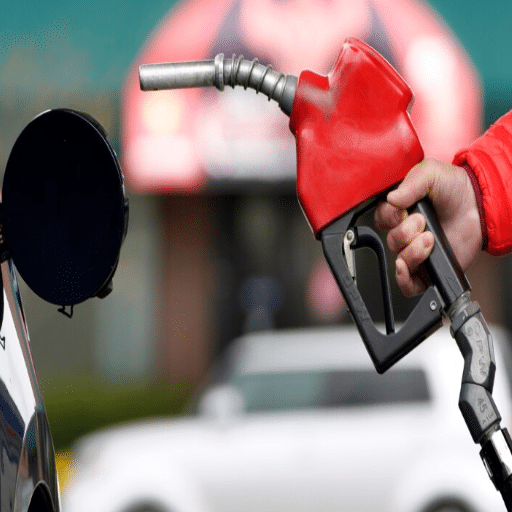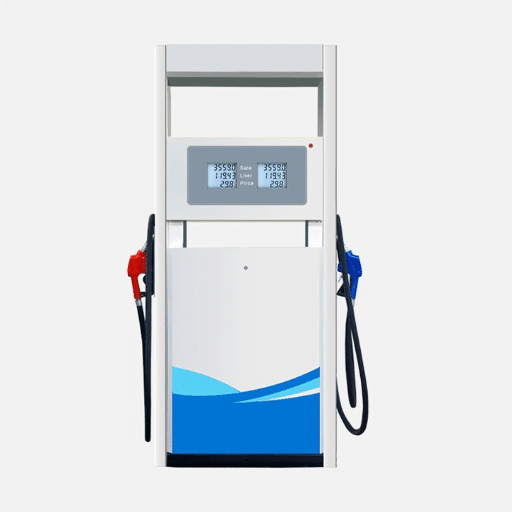Gas stations have ordinarily been considered mere pit stops, a very practical but pretty boring place to refuel, grab some snacks, go to the restroom, or just recharge and hit the road again. There are a few stations worldwide that conform to the above description and stand apart by fusion with cutting-edge designs, architectural brilliance, sustainability approaches, and sometimes, the creativity of art. Through this blog post, you get to see some of the coolest and most peculiar gas stations worldwide and just step into the shoes of a tourist, wondering how such mundane spaces can double up as awe-inspiring landmarks. A journey awaits you to gas stations that would surpass just being a fuel stop, everything from slick modern designs to green innovations.
Introduction to Coolest Gas Stations
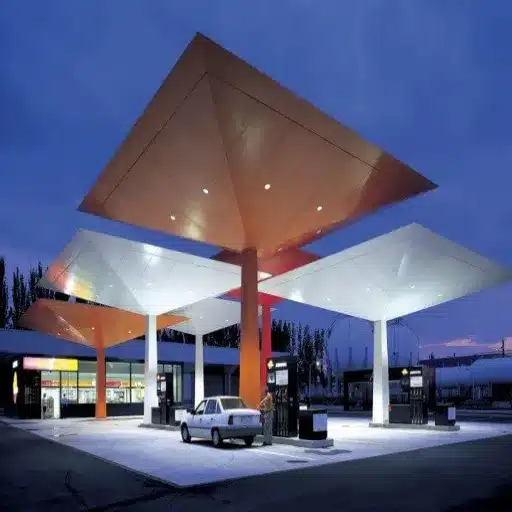
These days, gas stations tend to be viewed as very straightforward: just places to fill up a car and grab a few essentials compulsively. But on occasion, indeed, a gas station becomes a marvel in architecture and design. These fuel stops, standing in the middle of very pedestrian sites, garner special attention with their unique elements like sustainability, outward-looking futuristic design, and artful touches. Trailing design behind very stark function, they show us that, really, some everyday spaces can become landmark spaces.
Defining the Coolest Gas Station
Design-wise, the stations can often impress the imagination or culture of the locale or area. InfoWire had earlier ranked Helios House in Los Angeles as the most eco-friendly gas station in the world. This facility is built using recycled and sustainable materials, has solar panels, and represents a design ideology that focuses on functionality and ecological consciousness.
The Viale Zara Shell station also deserves an honorable mention. Sleek and futuristic, it is a cultural venue dedicated to the facilitation of urban integration. Likewise, the UFO-shaped Esso Mobil Gas Station in Slovakia became a visual landmark with its space-age style.
The amenities, in addition to the design, make destinations worthy for the buyer. Many modern-day fuel stations have electric vehicle chargers, cafes with gourmet food, and even retail shops for local artisan wares. In Alaska, for example, the Naknek fuel station offers fresh seafood and fuel for locals and visitors alike.
The data reveals a global rising trend for sustainable and multifunctional gas stations. From the report, it was evident that renewable energy usage is increasing and further stations are generating up to 50% of their energy through solar power. Such advancements, therefore, attract the environmentalists to the consumers, setting standards for fuel stops of tomorrow. Indeed, those cool gas stations make a statement to better the fuel stops by way of art, sustainability, and ingenuity, in conjunction with practicality.
Importance of Gas Stations as Attractions
Now, gas stations have come to be a lot more than just places to refuel; they almost seem to be destinations unto themselves. A great majority of stations are making noise and attracting customers through a solid mixture of aesthetics and utility. For instance, the Helios House of Los Angeles has come to be regarded as the “world’s first green gas station,” with sustainable materials, energy-efficient construction, and forward-looking design. In like fashion, the Shell gas station in Norway is situated on the scenic Atlantic Ocean Road, stands as a landmark, and merges with the spectacular coastline as both a stop for motorists and a tourist attraction.
These data points indicated the importance of this multi-functional gas station. Research states that extraordinary levels of convenience, green features, and architectural beauty can result in an almost 30% increase in customer retention. On the other hand, tourist behavior studies reveal that if a gas station is aesthetically pleasing or has many amenities, travelers are 25% more likely to include stops there in their itineraries, thus positively impacting local economies, which entails patrons shelling out money for food, drinks, and other services on-site.
Such revelations primarily draw attention to the increase in expectations set by consumers towards ecology-based travel and enriching road trip experiences. So, by promoting design, function, and sustainability, gas stations are stepping out from traditional roles and paving the way to bring good to the travel ecosystem and the community.
Overview of Unique Features
Modern gas stations are integrating innovative features for the ever-changing traveler’s needs and preferences. Infrastructure advancements include charging stations for electric vehicles and solar-powered rooftops that go side by side with global carbon footprint reduction efforts. Also, quite a few stations are burgeoning with smart technology that supports mobile phone payments, real-time fuel price updates, route planning, and even loyalty rewards. More for the fun of it, these spots also have an array of conveniences like gourmet cuisine, pristine bathrooms, and spaces to relax, effectively doubling up as sanctuaries of comfort along lengthy trip itineraries. It was a perfect service to merge these features with the customers’ demand for convenience and sustainability, resulting in an altogether more pleasant travel experience.
Famous Gas Stations Across the Globe
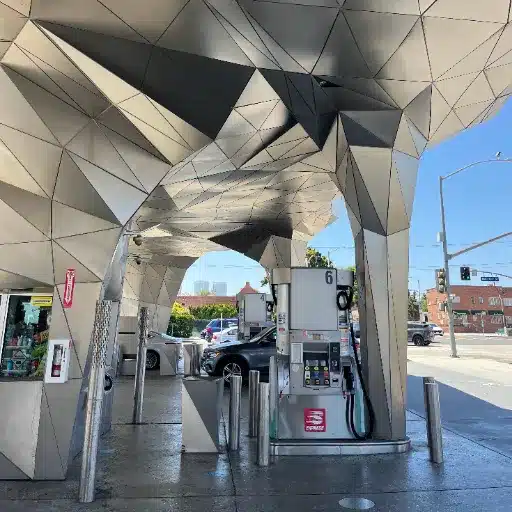
| Gas Station | Location | Notable Features |
|---|---|---|
| Shell Service Station | Norway (Arctic Circle) | Stunning modern architecture that fits perfectly into the marvelous Nordic landscapes. |
| Galpin Gas Station | Los Angeles, USA | Endearing retro design and bright colors; nostalgic aesthetic from the golden era of American road trips. |
| Eni Station | Italy | Sleek design and green practices, classic symbol of Italian know-how with renewable energy. |
| Dubai Gasoline Station | UAE | Luxury services, supreme technology, and fine-dining experience for glitzy travelers. |
These gas stations stand out from fueling points and are transformed into spectacular architectural and cultural landmarks. They bring together travelers with unique experiences worldwide.
Iconic Gas Stations Worth Visiting
Helios House: A Modern Marvel
Located in Los Angeles, California, Helios House is a really innovative gas station, with a focus on sustainability in its design and features. An eco-sympathetic structure, it makes use of recycled stainless steel and sports a green roof that insulates the building and discourages energy consumption. Solar energy in the form of photovoltaic panels is generated for the building, whereas water conservation systems mitigate environmental impacts. Being the first gas station in the U. S. to be awarded LEED certification, Helios House shows how states of sustainability and responsible energy usage can be envisioned even for ordinary infrastructure. Apart from its functional nature, the station represents and stands for avant-garde design and environmental fortitude.
Pops 66: A Roadside Icon
In Arcadia, Oklahoma, along the iconic Route 66, Pops 66 is a picturesque roadside attraction that has very much become a symbol of Americana. Celebrating a little bit of nostalgic road trip allure with futuristic architecture and a gargantuan 66-foot-tall neon soda bottle, Pops 66 serves as a tribute to gastronomy and the culture of bouncing road. There are over 700 different types of soda served at the station, representing nearly every country in the world, and this attracts both vagabonds and soda lovers. Its aesthetics combine a slickly modern front glass storefront with splashes of retro styling, straddling the past and future. Thus, it has grown into more than just ‘stop for gas, pick up some snacks’: Pops 66 is now a bona fide attraction for those with an eye for Route 66 history and yearning for that taste of American roadside heritage.
The Teapot Dome Service Station: A Unique Structure
The Teapot Top Gas Station in Zillah, Washington, is a quirky roadside structure. Completed in 1922, its teapot-shaped structure was inspired by the “Teapot Top Scandal.” The circular structure, complete with handles and a spout, was originally a gas station, but also a remarkable advertisement to attract drivers. Today, the station has been designated a historic landmark, elevating it to the creative charm of an early 20th-century roadside attraction. Today, it’s listed on the National Register of Historic Places, renowned for its comical architecture and cultural significance.
Top Gas Stations in Minnesota
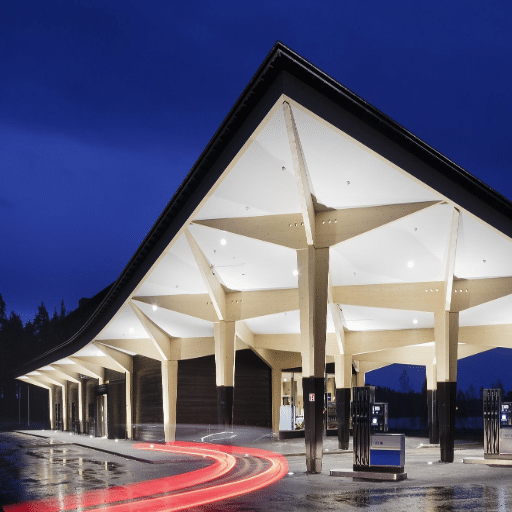
There is a bevy of unique gas stations all across Minnesota, each with special flavors to offer the residents and travelers. Some of the ones that stand out include:
- Minnoco Stations – These stations support local communities and are committed to giving reasonable prices for good fuel that is sourced locally.
- Holiday Stationstores – Famed for convenience, this place sells not just fuel but snacks, carwashes, and all-important Travel Services.
- Kwik Trip – Known for its friendly service, fresh food, and clean facilities.
- Cenex – A regional fuel provider with strong ties to agricultural communities.
- Sinclair Gas Stations – Visibility from the colorful dinosaur logo; these stations engender nostalgia alongside the promise of solid service.
Each of these stops contributes to the roadside identity of Minnesota, juxtaposing fuel along with local flavor and community concern.
The Allure of Cloquet’s Gas Stations
Cloquet is known for offering some truly unique gas station experiences, blending history with architecture and utility. The Wright-designed gas station in Cloquet, erected sometime in the 1950s, is a wonder of architecture that draws visitors from all parts of the world. Famous for its unusual architecture, the station features a cantilevered canopy, ingeniously using space in a way that embodies Wright’s vision of a modern gas station. Besides being one of the artsy landmarks of the area, it is still essentially a service station, and that duality lends to the charm of living history.
The town of Cloquet has gas stations that do more to serve the community than just sell petrol. They act as social and recreational gathering spots in a small town–locals, as well as tourists, can enjoy glumness-worthy service amidst a somewhat modern setup. Some might have regional eateries, snacks, and souvenirs, thereby providing good incentives for road tripping along the scenic routes of Minnesota. Cloquet gas stations represent that character of Minnesota that any architecture lover, history enthusiast, or weary traveler will appreciate!
R.W. Service Station: A Must-Visit
In Cloquet, Minnesota, R. W. Service Station provides not only a refueling stop but also a step back in time. The gas station was built in 1929 and was the only gas station designed by Frank Lloyd Wright, thus becoming a certain type of landmark. Distinct cantilevered canopies characterize the design, with red brick walls and a tower accommodating an office for the service attendant. Such a design would be an embodiment of Wright’s concept, merging innovation with the surrounding nature. The station, functioning as a gas station even today, attracts architects and curious tourists from all over the world. A visit to R. W. Service Station gives one both liquid fuel and an opportunity to tap into a piece of American architectural history.
Exploring Zillah’s Gas Stations
Zillah is famous for its odd gas stations of uncommon design and unique history, with their blend of practical nature and cultural significance: an atypical tourist destination. Among them is the Teapot Dome Gas Station, a fanciful station built to look like a teapot after the infamous 1920s Teapot Dome Scandal. Built in 1922, this station is a piece of history with an ulterior motive: now it functions as a visitor center, attracting travelers interested in its quirky charm and historical connections.
The other station of significance, the R. W. Service Station, also ranks extremely high architecturally. Here, Frank Lloyd Wright imported his design philosophy to the concept of a gasoline station, where he stressed harmony with the landscape. Cantilevered canopies and areas of bright red brick are there on display to fulfill just that.
The gas stations in Zillah are more than simply places to go fill up-they are places that narrate the tale of American history, all culture, and design, thus drawing in locals and tourists alike.
Architectural Wonders of Gas Stations
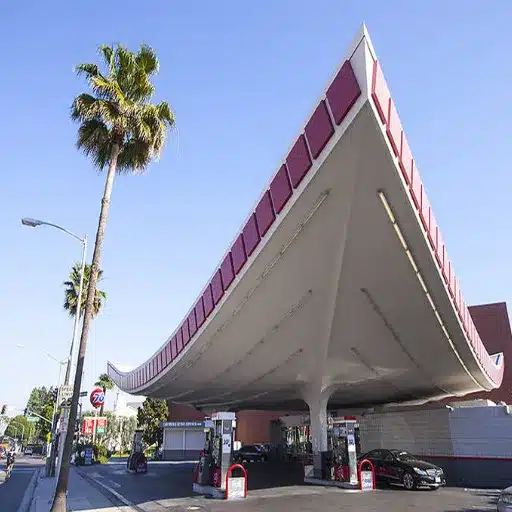
Well, there seems to be no actual question being posed here, but to give you a short overview of the topic:
The gas stations of Zillah represent a particular relationship between function and design. The genius of Wright is apparent in his transformation, attesting to the fact that even utility buildings can be treated as art. The architectural wonders of the gas stations tell a larger story about adapting design for daily encounters, thereby making these stops into more than just service points–they are cultural icons.
Innovative Designs in Fuel Stations
Innovative fuel station designs marry functionality with creative architecture, enhancing both the serviceability and aesthetic value of the building. Some of the stations have green features in design: solar panels and green roofs that decrease carbon footprints and thus encourage sustainability. Besides green buildings, some are more futuristic, nice curve designs, glass facades, and unusual shapes go into making iconic landmarks. Likewise, Helios House in Los Angeles is an eco-friendly gas station with recyclable materials and renewable energy, whereas the Teapot Dome Gas Station in Zillah stands as an odd roadside attraction with loads of charm and history. These inventive designs serve people, but they can also change an otherwise dull refilling stop into a memorable experience-a fine example of how innovation can change our perception of ordinary structures.
Roadside Attractions with Architectural Significance
Roadside attractions with architectural significance describe sites that meld use and creative design with the intent to garner attention and provide a unique experience. Many roadside attractions enact a story: they may be about regional history, culture, or artistic aspiration. For example, Cadillac Ranch in Texas is an example of interactive public art; Lucy the Elephant in New Jersey is a bit of historic whimsy. These architectural sites emphasize the combination of geometry and usefulness; thus, they make mundane places into tourist towns. Each edifice invites the tourist to explore not only a location but also the ingenuity and culture that stand behind it.
Understanding Gas Stations as Service Stations
More than a site where fuel is put into vehicles, gas stations have become intangible service points offering various amenities, catering to wander under-testing. Modern gas stations still feature a forecourt with access to petrol or diesel and extensions such as convenience stores equipped with snacks, soft drinks, and essentials for the road. Some offer vehicle washing facilities, air fills for tires, or food joints affiliated with famous brands. Located to serve commuters and roadsters, they ensure that they always remain within reach of their users, short of local amenities or services. Their design maximizes traffic flow and provides large human spaces with vehicle efficiency, making them a vital part of transport infrastructure.
The Future of Gas Stations
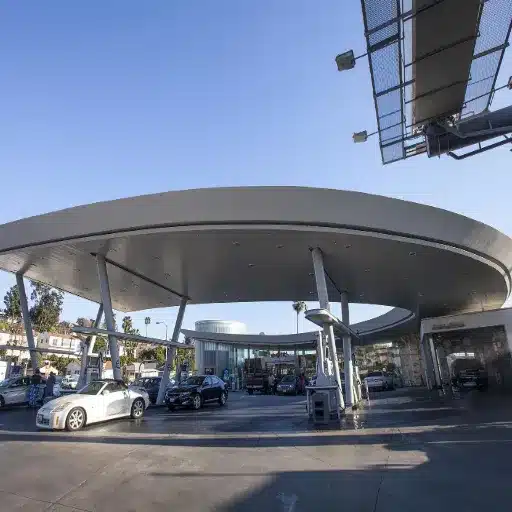
Gas stations in the future will be oriented toward innovation and sustainability. With the growth in acceptance of EVs across the country, many gas stations are procuring and installing EV charging stations within their premises. These charging points are meant to accommodate alternative energy demands, providing maximum convenience to EV drivers. At some point in the future, renewable energy considerations might favor gas stations with solar panels or other green technologies for fuel needs. Smart technology is also expected to uplift customer experiences, as automated payment and app-based fuel management were promised. By this, gas stations aim to be in line with changing transport trends and put emphasis on environmental factors.
Emerging Trends in Gas Station Amenities
Gas stations, simply put, are adapting to the changes in consumer needs and environmental concerns. One trend worth mentioning is the installation of charging stations for electric vehicles to cater to demand from this growing market and provide convenience to the driver. Also, the stations are now set to go green by using solar energy for their operations, among other renewable energy options. Customer interactions are programmed to be social once again with the coming of smart technologies, where automated payment options, contactless fuel dispensing solutions, and fuel management through apps have the potential to make the whole user experience more efficient and comfortable. Gas station convenience stores are keeping up with the trend and offering healthier food options, gourmet coffee, and a bigger retail selection to compete with regular stores. All these signify the transformation of gas stations into modern service hubs promoting sustainable working and utmost focus on customer experience.
How Gas Stations are Adapting to Modern Needs
From my viewpoint, gas stations have evolved to modern needs, focusing on sustainability, technology, and convenience. They have incorporated some eco-friendly practices by offering alternative fuels and EV charging stations, along with advanced payment systems and app-based solutions. Another spurred change towards healthier food options and a more high-class retail experience goes to show that they wish to keep up with the evolving customer expectations. All these changes make the gas stations relevant and very much centered around the user in today’s fast-paced world.
The Enduring Appeal of Gas Stations as Cultural Landmarks
Once just a place for filling one’s car with gasoline, gas stations have acquired cultural meaning and status-verbs signifying development, community, and nostalgia. Though once heralded as the onset of the automobile age with iconic architecture and branding that fit into the spirit of adventure and movement, gas stations today are revered as landmarks by many, with some distinguished by innovative designs, retro styles, or out-of-the-ordinary offerings that draw the eyes of tourists and natives. These places are intersections that allow the gathering of crowds who share a story or lie in some rest. Despite the evolution of transportation technologies, the awareness of cultural consciousness and historical glories always keeps gas stations as an eminently prevalent riff in the fabric of society.
Reference Sources
Gas Station Projects on ArchDaily
Exploring the Unique Architecture of Gas Stations
Exploring the Unique Architecture of Gas Stations
Frequently Asked Questions (FAQs)
What are some of the coolest gas stations to stop for in the United States?
Some of the coolest gas stations in the U. S. are the classics: Jack Colker’s Union 76 in Beverly, California, and the Helios House in downtown Los Angeles. These stations are not only functional but also combine an unusual architectural design with places of historic interest, making them worthy stops for any traveler.
Where to Search for Vintage Gasoline Stops Worth Exploring?
Vintage gasoline stations are found all across the country, especially in North Carolina and Oklahoma. From the Teapot Dome Service Station in Zillah, Washington, to full-service stations in Winston-Salem, these ephemeral glances into the past are good for taking pictures.
What Makes Alzu Petroport A Unique Roadside Attraction in South Africa?
The Alzu Petroport in South Africa is special in that the gas station has beautiful geometric architecture and is set in a scenic environment. Besides being a gas station, it is also equipped with amenities meant for travelers to stop by and stretch their limbs in the middle of a long drive.
Can you name some roadside stops with vintage gas stations?
Roadside stops with vintage gas stations can be found along the historic highways, such as old Route 66. The Pops 66 station at Arcadia, Oklahoma, is famous for its visually stunning design, which draws the attention of travelers and enthusiasts alike.
What history does the coolest gas station have?
The history behind the coolest gas stations essentially lays bare the development of automotive culture in the United States. Many of these vintage stations, built around the middle of the last century, highlight the architectural styles and social trends of their day and now stand as interesting places worthy to be preserved and mulled over.
How are vintage gas stations affecting roadside culture?
The vintage gas stations remain the nostalgic landmarks of roadside culture, giving a classic old-time feeling of road trips. They often come decked with kitsch decor and vintage signboards while maintaining a rather unique charm that looks to travelers seeking that very authentic experience.
Are there any vintage gas stations in operation nowadays?
Everything is possible; this means such gas stations do exist in operation within the country. These stations, such as the 76 gas stations dotted all over, go on servicing the public while keeping alive the aura of their vintage stylistic designs, fine-chosen carpeting, and the full-service approach.
What makes a gas station worthy of a stop?
Unique architecture and some vintage touches in certain places offer refreshing alternatives to a run-of-the-mill gas station. Also, those offering local snacks or drinks tend to have an edge in clientele. The Alzu Petroport and the ones on Route 66 are usually much more appreciated by those who seek a little landmark experience as opposed to simply filling up their tanks.

